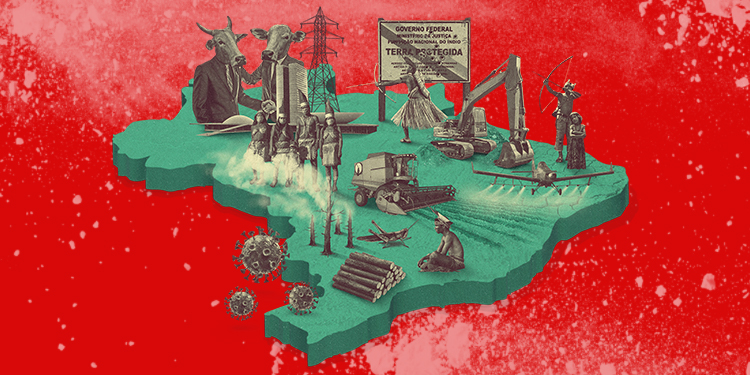WOLRD
The Pan-Amazon, an area of 8.47 million km² which covers across Brazil, Bolivia, Peru, Ecuador, Colombia, Venezuela, Suriname, Guyana and French Guiana, lost 724 thousand km² of forest and vegetation coverage between 1985 and 2018, according to an analysis made by MapBiomas Amazonia, released this Thursday. The area lost is equivalent to the sum of the states of the entire territory of Chile.
Of these 724 thousand km², most (692 thousand km²) were forested areas, and 32 thousand km² natural vegetation. This means that in 2018 there was 10% less forest in the Pan-Amazon than in 1985, as the image below shows.
Brazil concentrates most of the biome (61.8%) and was also the country that lost most forest cover in the period, both in absolute and proportional terms: it is 624,000 km² less. Next comes Bolivia, with 36,000 km²; Peru, with 16,000 km²; and Colombia, with 14,000 km².
In the same period, the area devoted to agriculture and livestock increased by 172% in the biome.
In 1985 there were 415,000 km² of agricultural and livestock activities throughout the Pan-Amazon. In 2018, it increased to 1.12 million km² – almost three times more. Most of the growth came from Brazil. In 1985, there were 319 thousand km² of land for agriculture and cattle raising. In 2018, it was 960 thousand km².
This is an direct consequence of the capitalist mentality of exploitation in the region. The Amazon forest its being destroyed in the name of “economical progress of the agriculture of the country”.
The Brazilian Amazon lost on average 2,110 hectares of forest per day in 2019, an area equivalent to 1,900 soccer fields with Fifa measurements. The biome was the most devastated in the country, representing 63% of the 3,339 hectares felled per day in the country. Adding up all the biomes, only 0.5% of the area of deforestation detected in 2019 is legal, according to the Annual Deforestation Report, organized by the MapBiomas project
MapBiomas is an initiative involving universities, NGOs and technology companies to map Brazil’s land cover and land use and monitor changes in the territory.
The report highlights that MapBiomas’ deforestation data should be used with caution when compared to official deforestation data (such as the Prodes system, responsible for the official detection of deforestation in Brazil). The Prodes Amazon system, for example, issues an alert for devastated areas above 6.25 hectares.
Fines for illegal deforestation in the Amazon have been virtually suspended since October 2019 due to a decree of the Bolsonaro government, according to the nongovernmental organization Human Rights Watch.
Official information obtained by the NGO shows that agents of the Brazilian Institute of Environment and Renewable Natural Resources (Ibama) have imposed thousands of fines since October for illegal deforestation and other environmental infractions in the Amazon and other parts of Brazil. However, in only five cases have violators been imposed the obligation to pay fines.
In October last year, the government initiated new procedures establishing that environmental fines should be reviewed in conciliation hearings. In these hearings, an environmental conciliation nucleus can offer discounts or declare the infraction notice null and void. The Ministry of the Environment established the suspension of the deadlines for paying these fines until the conciliation hearing is held.
Environment Minister Ricardo Salles said at the ministerial meeting on Apr. 22 that the government should take advantage of the moment when the focus of society and the media is on the new coronavirus to change rules that can be questioned in court.
According to him, it would be time to make a deep change in the rules related to environmental protection and agriculture and avoid criticism and lawsuits. “There is a huge list, in all the ministries that have a regulatory role here, to simplify. We don’t need Congress,” said the environment minister.




